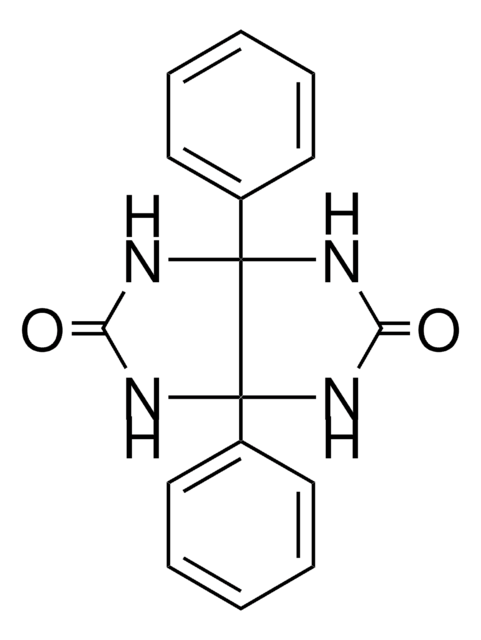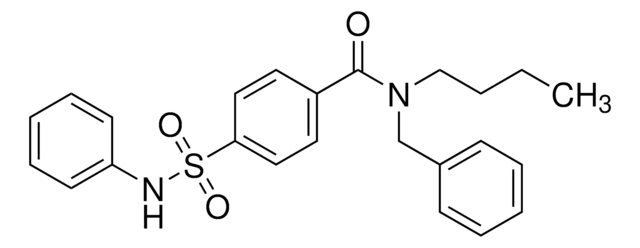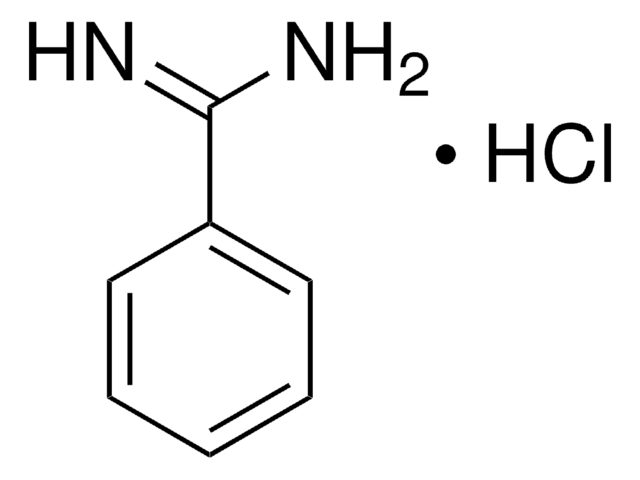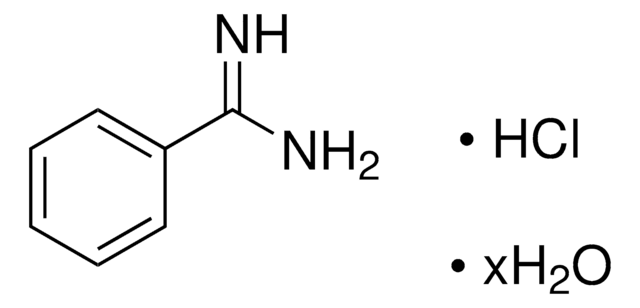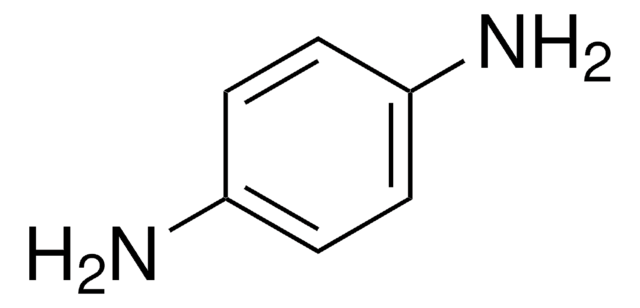SML0480
Terreic Acid
from Aspergillus terreus, ≥98% (HPLC)
Se connecterpour consulter vos tarifs contractuels et ceux de votre entreprise/organisme
About This Item
Formule empirique (notation de Hill) :
C7H6O4
Numéro CAS:
Poids moléculaire :
154.12
Code UNSPSC :
12352106
Nomenclature NACRES :
NA.77
Produits recommandés
Source biologique
Aspergillus terreus
Niveau de qualité
Essai
≥98% (HPLC)
Forme
solid
Solubilité
DMSO: 10 mg/mL
H2O: 2 mg/mL
Température de stockage
−20°C
InChI
1S/C7H6O4/c1-2-3(8)5(10)7-6(11-7)4(2)9/h6-8H,1H3/t6-,7+/m1/s1
Clé InChI
ATFNSNUJZOYXFC-RQJHMYQMSA-N
Application
Terreic Acid has been used to study its effect on alcohol intake and blood alcohol levels (BALs) in High Drinking in the Dark (HDID-1) mice. It has also been used as a supplement for culturing yeast progenitor cells to study its effect on yeast replicative lifespan.
Actions biochimiques/physiologiques
Terreic acid (TA) is a covalent inhibitor of the bacterial cell wall biosynthetic enzyme MurA.
Terreic acid (TA) is a covalent inhibitor of the bacterial cell wall biosynthetic enzyme MurA. The survival of most bacteria depends on the functionality of this cytosolic enzyme. The inactivation of MurA requires the presence of UDP-N-acetylglucosamine 1-Carboxyvinyl transferase, which catalyzes the first step in the biosynthesis of the bacterial cell wall. TA is more potent than the known MurA inhibitor Fosphomycin. TA was also found to severely inhibit the transcription of TNFα and IL-2. TA inhibits protein synthesis by blocking the formation of leucyl-tRNA in sensitive bacteria and inhibits the catalytic effect of Bruton′s tyrosine kinase (Btk), an important factor in B-cell and mast cell activation, by inducing conformational changes that prevent Protein Kinase C (PKC) from interacting with the Btk domain. Moreover, recent studies have demonstrated that TA exhibits a very high level of radical scavenging activity.
Caractéristiques et avantages
This compound is a featured product for Kinase Phosphatase Biology research. Click here to discover more featured Kinase Phosphatase Biology products. Learn more about bioactive small molecules for other areas of research at sigma.com/discover-bsm.
Notes préparatoires
Store the product sealed at -20 °C. Under these conditions the product is stable for at least 2 years. Solution of the product in water is not stable and should be prepared immediately before use. Solution of the product in DMSO is stable for at least 2 months at 4 °C.
Code de la classe de stockage
11 - Combustible Solids
Classe de danger pour l'eau (WGK)
WGK 3
Point d'éclair (°F)
Not applicable
Point d'éclair (°C)
Not applicable
Faites votre choix parmi les versions les plus récentes :
Déjà en possession de ce produit ?
Retrouvez la documentation relative aux produits que vous avez récemment achetés dans la Bibliothèque de documents.
S Basu et al.
The Journal of applied bacteriology, 67(2), 191-200 (1989-08-01)
Studies on self-sensitivity of producer mutant vs. sensitivity of non-producer parent and unrelated organism showed that versilin inhibited spore germination and sporulation in the self-sensitive producer mutant, non-producer parent Aspergillus versicolor N5 and the unrelated sensitive Trichophyton rubrum. Sporulation appeared
T Subramanian et al.
Toxicology letters, 10(2-3), 249-253 (1982-02-01)
The binding of terreic acid to macromolecules such as nucleic acids and protein was examined. In vivo studies using [14C]terreic acid showed that radioactivity was incorporated into the protein and nucleic acid fractions of the liver mice. In vitro experiments
Yuko Kawakami et al.
Allergology international : official journal of the Japanese Society of Allergology, 56(4), 403-409 (2007-08-24)
Atopic dermatitis is a chronic or chronically relapsing, pruritic inflammatory skin disease. The incidence of atopic dermatitis has dramatically increased during the past three decades in industrialized countries. We attempted to develop an improved method to induce an animal model
Genome-wide expression profiles drive discovery of novel compounds that reduce binge drinking in mice
Ferguson LB, et al.
Neuropsychopharmacology, 43(6) (2018)
A high-throughput screen for yeast replicative lifespan identifies lifespan-extending compounds
Sarnoski EA, et al.
Cell Reports, 21(9), 2639-2646 (2017)
Notre équipe de scientifiques dispose d'une expérience dans tous les secteurs de la recherche, notamment en sciences de la vie, science des matériaux, synthèse chimique, chromatographie, analyse et dans de nombreux autres domaines..
Contacter notre Service technique
